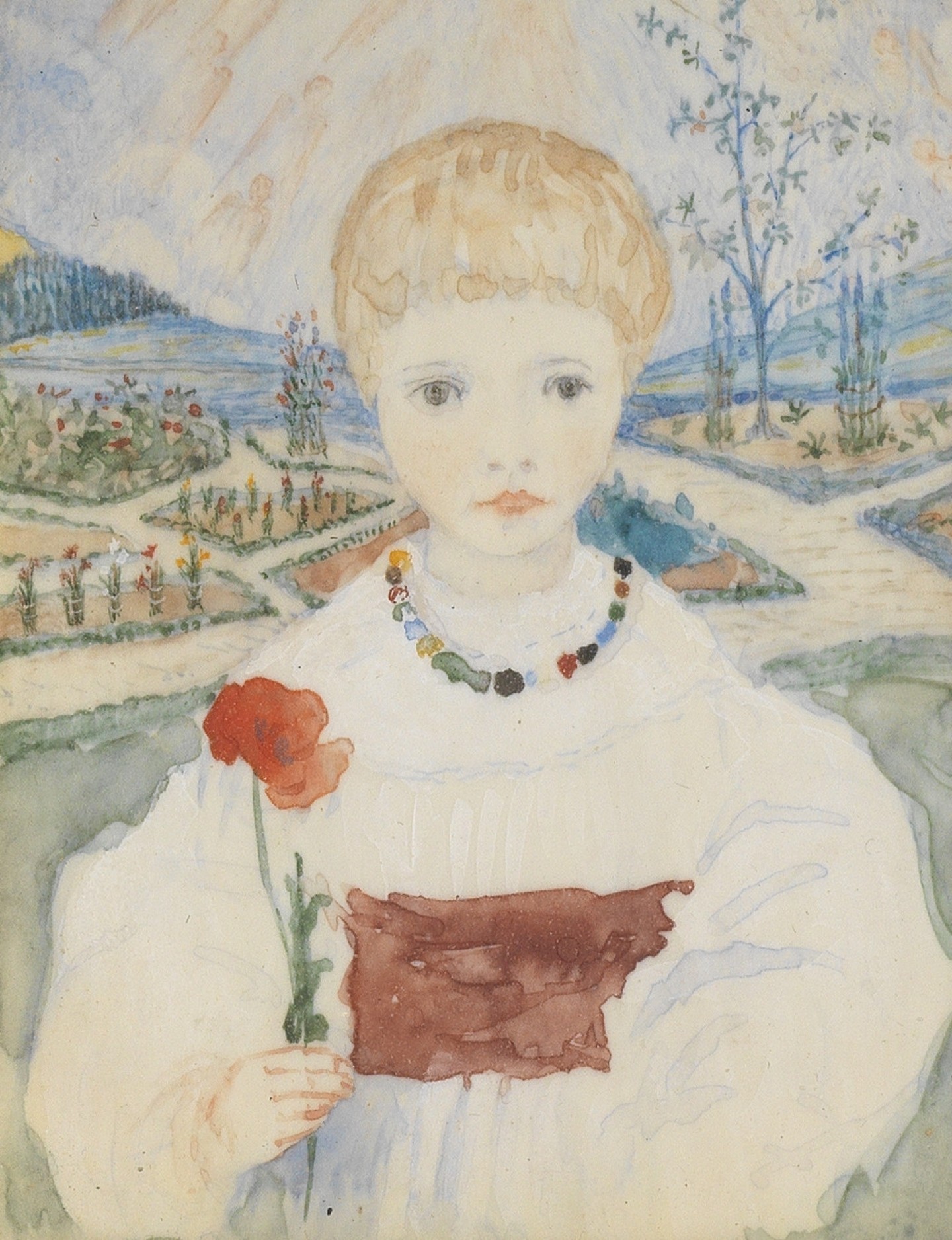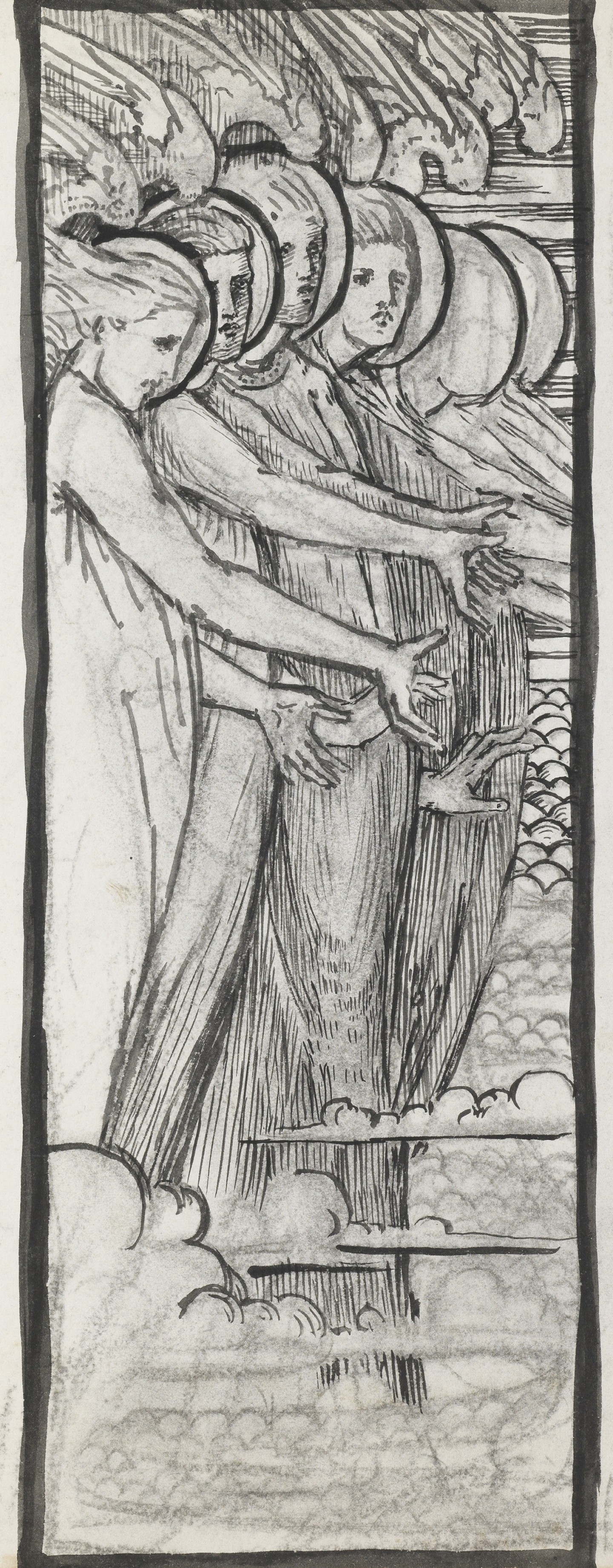DESCRIPTION
Traquair responded to the music of poetry in all her art, but nowhere more so than in the craft of manuscript illumination. When she painted her watercolour study of Hilda, she had recently begun to illuminate the Psalms of David on vellum, a highly ambitious programme which would continue for a decade. Such pages found an echo in her first mural decoration for children’s hospital chapel where medieval ideas were used together with echoes of Byzantinism and Pre-Raphaelitism. By the later 1880s her skill in illumination was such that she embarked on illuminating modern poetry which particularly moved her.
Traquair seems to have been entirely self-taught, with the copying of medieval pages a major part of her training. She is known to have been familiar with the medieval collections of Edinburgh’s Advocates’ Library and Museum of Science and Art, and her archive in the National Library of Scotland) reveals that she also visited London public collections including both the British Museum and Lambeth Palace Library. The medieval source of this copy – for it surely is such – has yet be unidentified, but we know that French and Italian illumination especially influenced her love of introducing all manner of natural detail (such as the tiny hare found here) and these also wove their way into her other crafts including embroidery.
The concentration and patience required to illuminate even a single page was considerable, yet in a sense such slow, close work came naturally to her. After all, she illustrated her husband’s fossil research papers throughout his professional career, and it had been this which had first brought them together in Dublin in the early 1870s. In the spring of 1887 she wrote to John Ruskin for advice on what to copy. Their surviving correspondence over a period of three or so months reveals loans of medieval manuscripts to Traquair and her own modern pages to him. Her delight in old manuscripts was recorded in letters to family and friends, and in a 1897 interview published in The Studio she commented that ‘purple and gold are delightful things to play with’ and ‘the thirteenth and fourteenth centuries have always appealed to me most in illuminated work’.
DETAILS
-
Artist
Phoebe Anna Traquair
-
Medium
Ink and watercolour on vellum
-
Object number
3262
-
Dimensions unframed
18 × 13.5 cm
-
Subject
ARTIST PROFILE
Phoebe Anna Traquair HRSA, 1852 - 1936
From the 1880s to the 1920s Phoebe Anna Traquair was known as one of Scotland’s leading muralists and craft artists. The daughter of a Dublin doctor, she had been born and educated in Ireland and settled in Edinburgh with her zoologist husband Dr Ramsay Heatley Traquair (1840-1912). Traquair’s admired Greek sculpture and the romance of Pre-Raphaelite painting, medieval craft as well as modern engineering. Her mentors above all were the great poets and writers of the past and present including Dante, Blake and Rossetti. She struck up friendships with artists including William Holman Hunt and briefly corresponded with John Ruskin in the late 1880s. Ruskin lent her medieval manuscripts to study and copy, and these, together with her reading, inspired a series of glorious illuminations of poetry. Above all she always enjoyed the challenges of mastering traditional crafts from embroidery to leather bookcover tooling and, after 1900, art enamelling on copper and silver. She had a professional studio space within the Dean Studio in Lynedoch Place, Edinburgh, from 1890.







